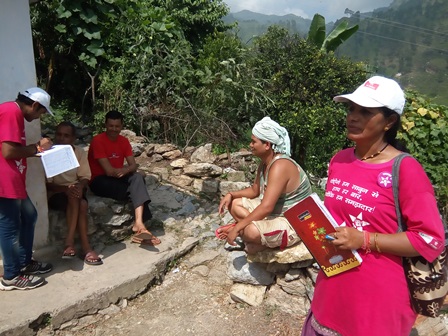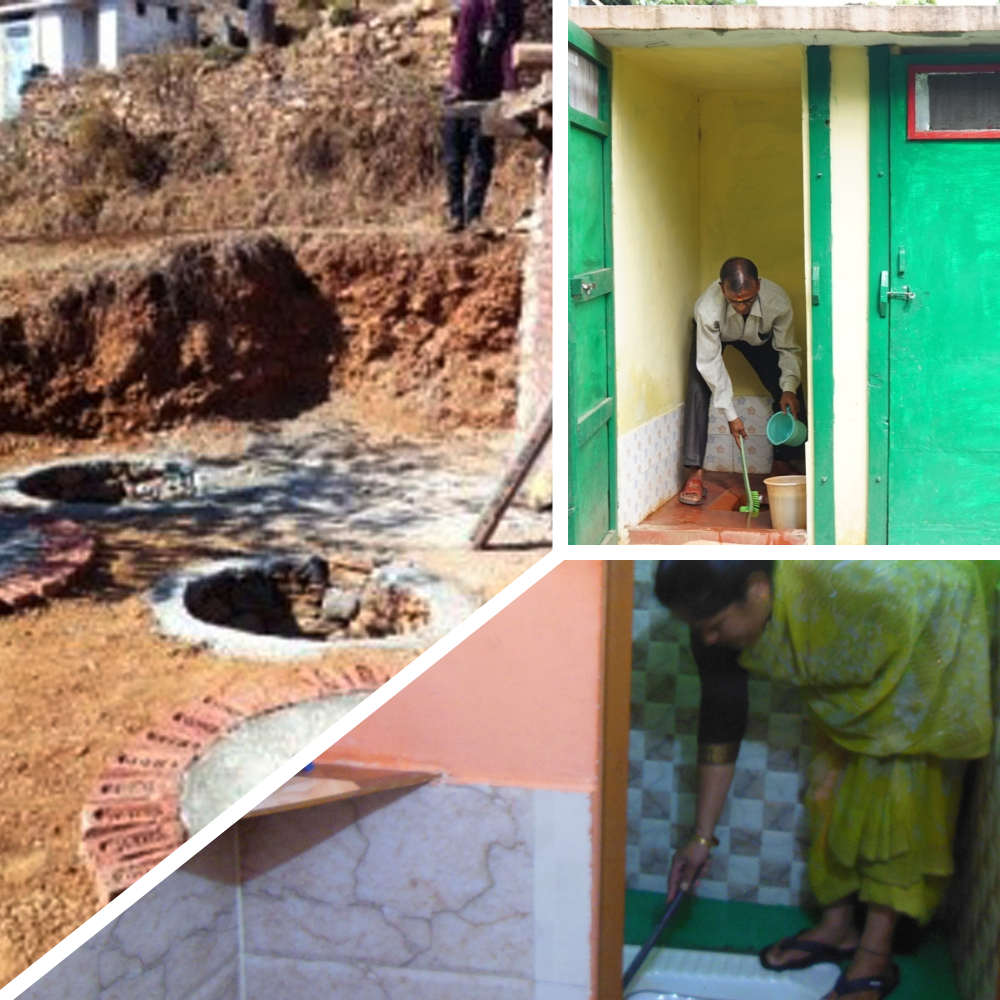 India’s sanitation challenges are well documented. Despite over a quarter
century of government-led interventions starting with the Central
Rural Sanitation Program (CRSP) in 1986, through the Total
Sanitation Campaign (TSC), Nirmal Bharat Abhiyan (NBA), and
the recently christened Swach Bharat Mission (SBM), India has over
60 percent of the global burden of individuals who defecate in the
open. A 2010 World Bank study estimated
that poor sanitation and the resulting disease
burden economic could lead to losses equivalent to 6% of GDP due to
mortality, lost productivity and health-related costs. Environmental
enteropathy, water-borne helminthic infections and diseases like diarrhea also
contribute to poor health, nutrition and cognitive outcomes and nearly 600,000
child deaths annually. Inadequate access to safe sanitation
facilities are also reported to exacerbate equity issues
contributing to negative outcomes like high school dropout
rates for adolescent girls and sexual violence against women.
Finally, the world appears likely to miss the MDG around improved access to
basic sanitation largely because of India’s lagging performance.
India’s sanitation challenges are well documented. Despite over a quarter
century of government-led interventions starting with the Central
Rural Sanitation Program (CRSP) in 1986, through the Total
Sanitation Campaign (TSC), Nirmal Bharat Abhiyan (NBA), and
the recently christened Swach Bharat Mission (SBM), India has over
60 percent of the global burden of individuals who defecate in the
open. A 2010 World Bank study estimated
that poor sanitation and the resulting disease
burden economic could lead to losses equivalent to 6% of GDP due to
mortality, lost productivity and health-related costs. Environmental
enteropathy, water-borne helminthic infections and diseases like diarrhea also
contribute to poor health, nutrition and cognitive outcomes and nearly 600,000
child deaths annually. Inadequate access to safe sanitation
facilities are also reported to exacerbate equity issues
contributing to negative outcomes like high school dropout
rates for adolescent girls and sexual violence against women.
Finally, the world appears likely to miss the MDG around improved access to
basic sanitation largely because of India’s lagging performance.
Against this fairly dismal background, the Government
of India and various development partners have attempted
to intensify and strengthen efforts to improve national
sanitation coverage and outcomes. Progress has
particularly been achieved over the last
decade following the launch of the TSC, which sought
to shift from an exclusive focus on toilet construction
(as under the CRSP) to a more integrated approach that included elements like
communication for behavior change and incentives for collective action at
village and sub- district level (the Nirmal Gram Puraskar or NGP).
 Since the launch of the TSC in 1999, the government reports having
constructed over 60 million toilets across India (roughly one for every
ten rural population) and has spent over 100 billion rupees leading to reported
sanitation coverage increasing from 22% to over 68% (TSC 2012). These apparently
impressive figures notwithstanding, the implementation of the TSC
has been critiqued for continuing with an excessive focus on
toilet construction with little emphasis on promoting toilet
use and safe disposal of fecal matter, largely due to weak progress
on the demand generation and norm shaping aspects
that determine sanitation behavior. A notable exception was the NGP under
which 28,000 Gram Panchayats (GP) – about 10% of the total number – were awarded
for achieving open defecation free status. As it moves
into the 12th Five Year Plan (2012-2017), the
Government of India has announced plans to rebrand the TSC as
the Nirmal Bharat Abhiyaan (NBA) in order to build on the successes of the TSC
and achieve the goal of ending open defecation by 2017. Later, it has been
further modified to Swach Bharat Mission (SBM), providing better incentive up-to
Rs. 12,000/.
Since the launch of the TSC in 1999, the government reports having
constructed over 60 million toilets across India (roughly one for every
ten rural population) and has spent over 100 billion rupees leading to reported
sanitation coverage increasing from 22% to over 68% (TSC 2012). These apparently
impressive figures notwithstanding, the implementation of the TSC
has been critiqued for continuing with an excessive focus on
toilet construction with little emphasis on promoting toilet
use and safe disposal of fecal matter, largely due to weak progress
on the demand generation and norm shaping aspects
that determine sanitation behavior. A notable exception was the NGP under
which 28,000 Gram Panchayats (GP) – about 10% of the total number – were awarded
for achieving open defecation free status. As it moves
into the 12th Five Year Plan (2012-2017), the
Government of India has announced plans to rebrand the TSC as
the Nirmal Bharat Abhiyaan (NBA) in order to build on the successes of the TSC
and achieve the goal of ending open defecation by 2017. Later, it has been
further modified to Swach Bharat Mission (SBM), providing better incentive up-to
Rs. 12,000/.
As per Ministry of Drinking Water and Sanitation, Govt. of India[1],
latrine coverage is only about one third of population.
It is a matter of national shame that there are an estimated
626 million people in India defecating in the open and this constitutes nearly
60% of those practising open defecation in the entire world. Hand washing is
also very low, leading to spread of disease. As far as water supply
is concern, only 71% habitations with 100% Population Coverage (37% with piped
water supply) could have been achieved.

The scenario is far worse in Uttarakhand, which consist of
sparsely populated clusters. Rudimentary infrastructure for the provision of
safe potable water and sanitation facility is still absent in many parts
of the hilly regions. Overall, house hold latrine coverage is around 54%.
Keeping in mind the issues of water security and sanitation in Uttarakhand
and the efforts put in by Himmotthan over the years, the Tata Trusts along with
H.T Parekh Foundation (an Initiative of HDFC) propose to cover 312
villages, comprises of 117 Gram Panchayats (GP) of Gangolihat block, Pithrogarah
district by providing sanitation facility to 6,400 household with improved Point
of Use (PoU) water and water security plan to selective villages, thus
benefiting above 40,000 people. The project would be for a period of three
years, clubbed with carefully developed Information, Education and Communication
(IEC) strategy for effective and sustained rollout.